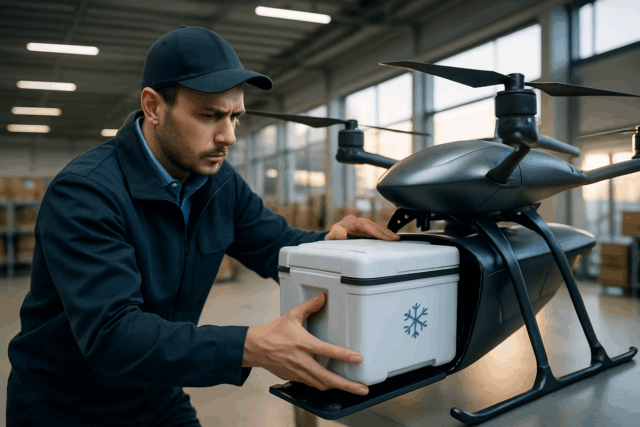The skies are increasingly populated with Unmanned Aerial Vehicles (UAVs) transforming infrastructure inspections across numerous industries, from energy and utilities to construction and agriculture. Drones gather vast amounts of high-resolution imagery, video, LiDAR scans, and thermal data, offering unprecedented insights into asset conditions. However, this explosion of data presents a significant challenge: how to effectively store, manage, and archive this critical information to maximize its value and ensure compliance. Without robust strategies, organizations risk escalating costs, performance bottlenecks, and potential compliance issues.
Developing a Comprehensive Drone Data Management Strategy
Effective drone data management is crucial for transforming raw aerial data into actionable insights, enhancing efficiency, and reducing operational risks. A well-defined strategy encompasses the entire data lifecycle, from acquisition to archiving and eventual deletion.
Establishing Data Governance Frameworks
Data governance provides a holistic approach to managing data assets, ensuring accuracy, consistency, accessibility, and security throughout their lifecycle. This involves setting clear policies, procedures, and standards, defining data ownership, quality metrics, and compliance requirements. For drone operations, this structured approach enhances data quality and reduces regulatory compliance risks.
Ensuring Data Quality and Consistency
High-quality data is paramount for accurate analysis and informed decision-making. Best practices include regular quality checks during inspections to identify issues like blurring, shadows, or gaps, and adjusting drone settings or flight plans as needed. Standardizing data processing across teams, potentially through automation, can also minimize human error and ensure consistency.
Organizing Data with Smart Classification
A systematic data classification system is vital for efficient storage, retrieval, and analysis. This involves categorizing data based on project, asset type, date, location, and other relevant parameters. A well-organized hierarchy makes it significantly easier to locate specific datasets, optimizes storage costs by allowing less critical data to be stored on more cost-effective media, and is crucial for demonstrating regulatory compliance.
Optimizing Drone Data Storage Solutions
The sheer volume and diverse formats of drone data (e.g., 3D models, LiDAR point clouds, thermal images) necessitate scalable and robust storage solutions.
Leveraging Cloud-Based Storage
Cloud storage has emerged as a preferred solution for drone data due to its scalability, flexibility, and accessibility.
- Scalability: Cloud platforms offer virtually unlimited storage capacity, accommodating the ever-growing volumes of drone data without the need for physical hardware expansion.
- Accessibility & Collaboration: Data stored in the cloud can be accessed from any device, anywhere, facilitating real-time sharing and collaboration among distributed teams. This enables quicker analysis, improved decision-making, and streamlined workflows.
- Integration with Analytics: Cloud platforms often integrate seamlessly with Business Intelligence tools and AI-powered analytics software, enabling advanced data analysis and visualization capabilities that might be impractical with on-premises infrastructure.
Considering On-Premises and Hybrid Solutions
While cloud storage offers many advantages, some organizations opt for on-premises storage for faster local access, complete control, or to meet specific data sovereignty requirements. Hybrid systems, combining cloud and on-site storage, offer a balance of flexibility, control, and scalability. Solutions like CloudNAS can extend existing NAS infrastructure to the cloud, simplifying data management and ensuring consistency across distributed teams.
Implementing Robust Data Security and Privacy Measures
Protecting sensitive drone data from unauthorized access, theft, or breaches is paramount.
Data Encryption
All sensitive drone data should be encrypted, both during transmission and when stored (data at rest). Secure file transfer protocols, VPNs, and robust encryption features like AES 256-bit encryption are recommended.
Access Controls and Authentication
Implementing role-based access control (RBAC) ensures that team members can only access the data necessary for their specific tasks. Strong authentication measures, such as multi-factor authentication (MFA), should be used for accessing drone controls and related applications.
Regulatory Compliance and Data Privacy Policies
Drone operations must comply with relevant data protection regulations such as GDPR (General Data Protection Regulation) in Europe or CCPA (California Consumer Privacy Act) in the U.S., especially when collecting identifiable personal data. Organizations should:
- Develop a comprehensive data privacy policy outlining how data is collected, stored, processed, and shared.
- Obtain necessary permissions from property owners or relevant stakeholders before inspections.
- Adhere to the principle of data minimization, collecting only data essential for the intended purpose.
- Establish clear data retention policies that comply with regulations, outlining how long data will be stored and when it will be deleted.
- Ensure data sovereignty, controlling where and how aerial data is stored, processed, and shared, particularly for operations across different regulatory jurisdictions.
Cybersecurity Best Practices
A well-designed cybersecurity strategy for drone inspections includes reviewing equipment to ensure data encryption prior to transfer, restricting devices that can connect to the base station, and maintaining regular firmware updates. Using secure connections and avoiding public Wi-Fi or unsecured networks are also critical. For highly sensitive operations, some drone systems offer “Local Data Mode” to block data transmission to external servers.
Mastering Metadata Management for Drone Data
Metadata is the “instruction manual” for your data, providing context, origin, and usage information. It is essential for data discovery, understanding, governance, and effective utilization.
Automating Metadata Collection
Leverage tools that automatically extract technical metadata from drone logs and image files. This includes GPS coordinates, altitude, camera parameters, date, time, and flight path. Integrating metadata capture as a standard part of data processing workflows is crucial.
Creating Detailed Flight Metadata
Beyond technical metadata, documenting “flight metadata” such as the site name, project, pilot, aircraft used, and weather conditions provides valuable context for data interpretation and management. This also aids in creating standardized directory structures and managing catalog production workflows.
Long-Term Archiving and Data Retention Policies
Defining clear policies for data retention and archiving is essential to manage storage costs, ensure compliance, and preserve valuable historical data.
Structured Archiving
Store inspection data in a structured and organized manner to facilitate future analysis and comparisons. This allows for tracking changes in asset conditions over time, assessing maintenance effectiveness, or supporting regulatory compliance.
Data Lifecycle Management
Develop policies for how long different types of drone data should be retained based on regulatory requirements, operational needs, and their potential future value. Regularly review and purge data that is no longer needed to optimize storage resources and reduce security risks.
Integrating Data for Analysis and Actionable Insights
The true value of drone inspection data lies in its analysis and the insights derived from it.
Leveraging Data Processing and Analysis Software
Utilize specialized software for processing and analyzing inspection data, such as photogrammetry software for 3D models or GIS software for spatial analysis. Cloud-based drone mapping software provides flexibility for teams to collaborate and process data efficiently.
AI and Machine Learning Integration
Integrating AI-driven analytics can efficiently process aerial data, supporting object detection, recognition, and predictive maintenance. AI classifiers can automatically identify issues and integrate results into workflows, such as geolocating defects on 2D maps or 3D digital twins, minimizing human analytics and scaling inspection projects.
By systematically implementing these best practices for storing and archiving drone inspection data, organizations can unlock the full potential of their drone programs, ensuring data integrity, security, accessibility, and compliance while driving smarter, more informed decision-making.





